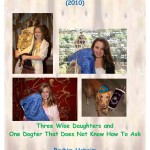Informant is grandmother, currently living in Florida having lived most of her life in New Jersey. The following is printed on a series of old, twice-photocopied documents which she stores in a closet in a large bin. These are a familiar sight for the family during Passover, in which the entirety of the song is sung together before beginning with the dinner service.
There’s No Seder Like our Seder
(sung to the tune of “There’s no Business like Show business”)
There’s no seder like our seder,
There’s no seder I know.
Everything about it is Halachic
nothing that the Torah won’t allow.
Listen how we read the whole Haggadah
It’s all in Hebrew
‘Cause we know how.
There’s no Seder like our seder,
We tell a tale that is swell:
Moses took the people out into the heat
They baked the matzoh
While on their feet
Now isn’t that a story
That just can’t be beat?
Let’s go on with the show!
Of course this song is not traditional jewish canon, as it’s inspired by the song “There’s no Business like Show business.” Somewhere down the line, at a time she does not remember, these papers were copied and it was decided to sing it before opening the Hagaddah (Passover prayerbook read at dinner). I think this song, to her, is a fun family activity which gets all ages singing together and warmed up for the night.

